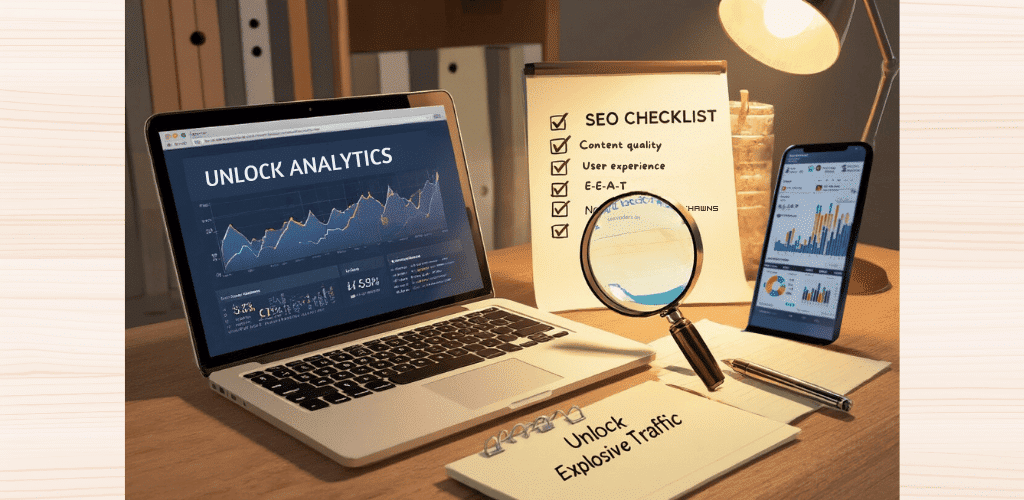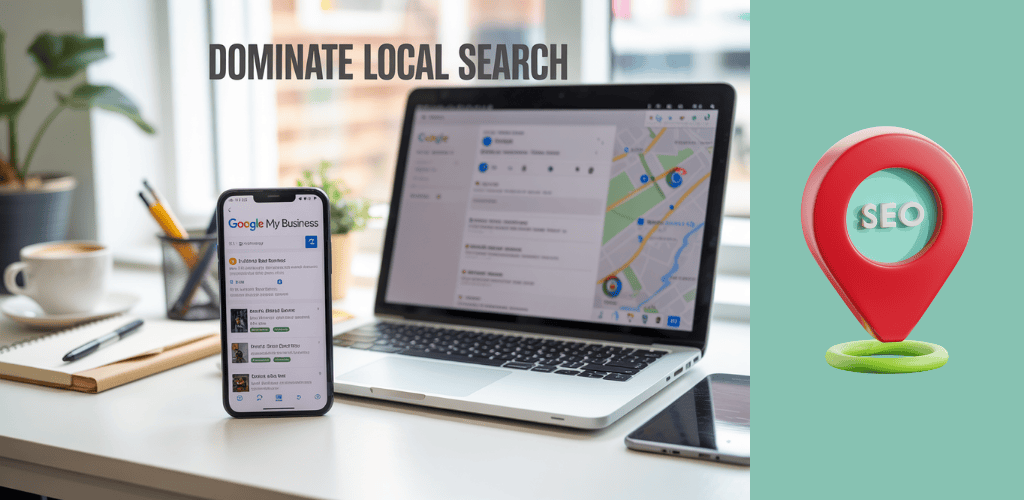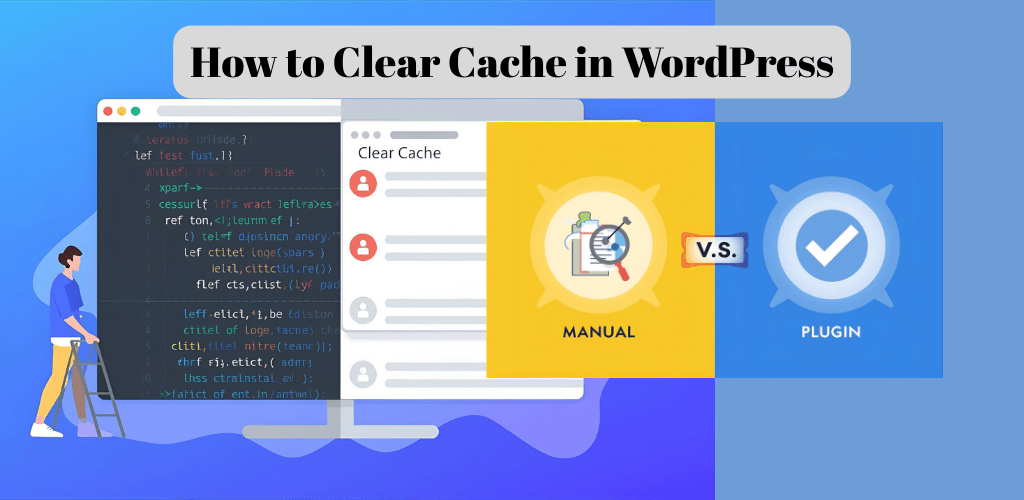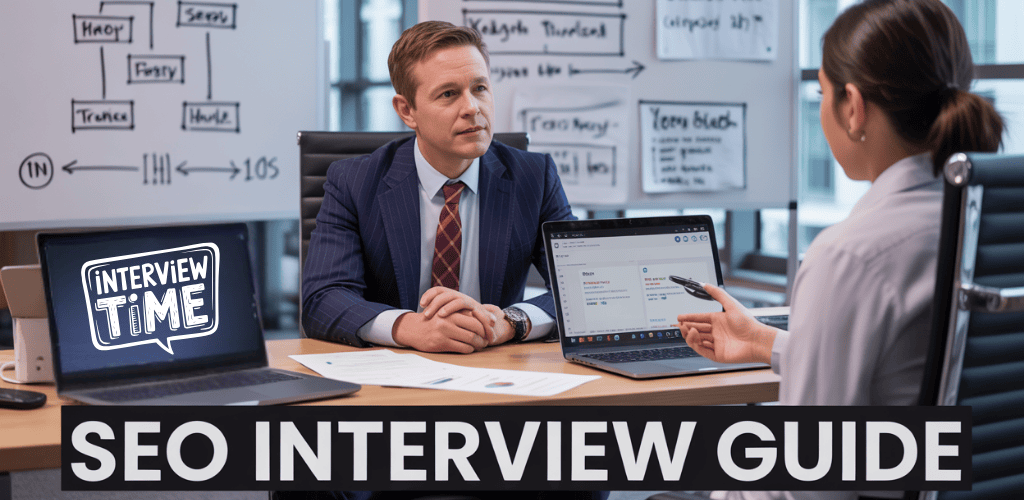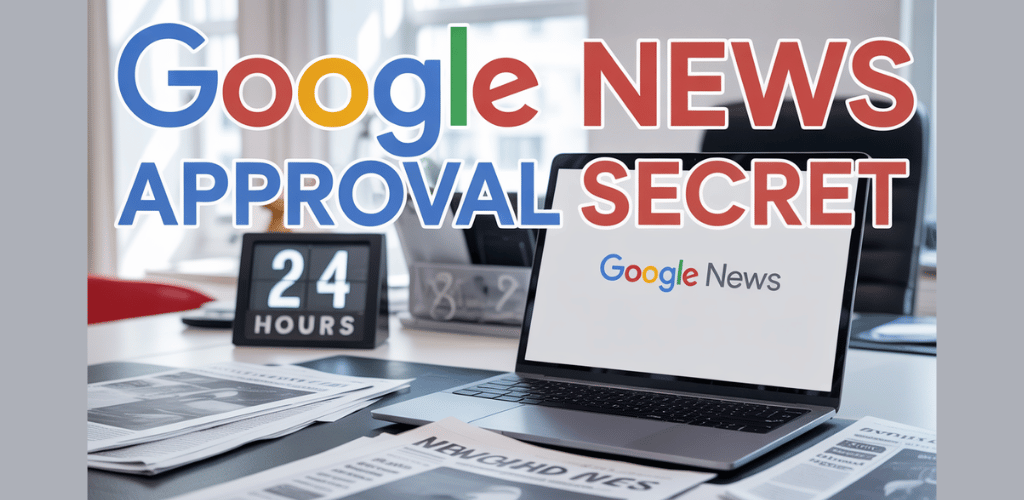Ever opened a blog that gets zero search traffic and wondered if Google secretly hates you? You’re not alone. I’ve seen countless business owners create “SEO-friendly” content that sits in the digital wasteland collecting virtual dust.
Let’s cut through the noise. This on page SEO checklist isn’t just another listicle – it’s your roadmap to making Google fall in love with your content while keeping actual humans reading.
I’ve distilled years of testing into actionable steps that drive real traffic. No fluff, no outdated tactics that stopped working in 2018, and definitely no “write great content” nonsense without explaining what that actually means.
Ready to see what your competitors don’t want you discovering? The first technique alone doubled organic traffic for three of my clients last quarter…
Table of Contents
Understanding the SEO Foundation

What Makes On-Page SEO Critical for Traffic
Picture this: you’ve built an amazing website with killer products, but no one’s visiting. Frustrating, right? That’s where on-page SEO comes in.
On-page SEO is like putting up billboards and road signs that lead straight to your digital doorstep. Without it, your website is basically invisible to search engines and, by extension, to potential visitors.
The truth? Even the most gorgeous website won’t get traffic if Google doesn’t understand what it’s about. On-page SEO gives search engines the context they need to match your content with user searches.
When done right, on-page SEO:
- Drives targeted traffic that actually cares about what you offer
- Builds credibility with both users and search engines
- Reduces your cost-per-acquisition compared to paid channels
- Creates a 24/7 traffic machine that works while you sleep
Key Ranking Factors in 2023
Gone are the days when stuffing keywords would get you to the top. In 2023, Google’s gotten smart—really smart.
Content quality now reigns supreme. Google wants content that actually helps people, not just content that’s optimized for algorithms.
User experience signals have skyrocketed in importance. If people click on your site and bounce right back to search results, Google notices and drops your rankings.
E-E-A-T (Experience, Expertise, Authoritativeness, Trustworthiness) has become crucial. Google’s looking for content created by people who know what they’re talking about.
Core Web Vitals directly impact rankings now. Slow-loading pages? You’re in trouble.
How Search Engines Crawl and Index Content
Search engines work like hungry librarians—constantly crawling the web, cataloging everything they find, and deciding which books (pages) deserve prominent shelf space.
The process breaks down into three main steps:
- Crawling: Google’s bots follow links across the web, discovering new and updated content. No crawl = no chance of ranking.
- Indexing: Think of this as Google taking a snapshot of your page and filing it away. If your page has technical issues, it might get filed incorrectly—or not at all.
- Ranking: This is where the magic happens. Google compares your indexed page against thousands of ranking factors to decide where you belong in search results.
The catch? You need to make your site easy for these bots to understand. Clear site structure, proper internal linking, and clean code aren’t just nice-to-haves—they’re essential if you want Google to properly interpret your content.
Mastering Title Tags and Meta Descriptions

Crafting Click-Worthy Title Tags with Keywords
Title tags make or break your SEO game. They’re the first thing users see in search results, and you’ve got about 60 characters to make them click.
Want to know the secret sauce? Put your primary keyword near the beginning. Google pays more attention to words that appear first, and so do readers.
Don’t just stuff keywords though. That’s amateur hour. Your title needs to solve a problem or promise a benefit. Compare these:
“On Page SEO Checklist for Websites” ❌
“On Page SEO Checklist: 9 Steps to Double Your Traffic” ✅
See the difference? The second one makes you want to click.
Writing Meta Descriptions That Drive Clicks
Your meta description is basically your ad copy. You’ve got about 155 characters to convince someone to choose YOU over the other nine results on page one.
Here’s the kicker – Google doesn’t use meta descriptions for ranking. But they absolutely impact click-through rates, which definitely affects rankings.
Include your target keyword, but focus on creating a compelling mini-pitch. Add a call-to-action like “Learn how” or “Discover why” to push users over the edge.
Avoiding Common Title Tag Mistakes
I see these blunders constantly:
- Duplicate title tags across different pages
- Super generic titles like “Home” or “Products”
- Keyword stuffing (looks spammy and desperate)
- ALL CAPS (nobody likes being yelled at)
- Missing brand name (reduces recognition)
Fix these, and you’re already ahead of most sites.
Optimal Length and Format Guidelines
Keep title tags under 60 characters to avoid truncation in search results. For meta descriptions, aim for 155 characters.
Structure matters too:
Primary Keyword – Secondary Keyword | Brand Name
Or:
Primary Keyword: Compelling Statement | Brand Name
Numbers work wonders in titles. “7 Proven On-Page SEO Tactics” outperforms “On-Page SEO Tactics” every single time.
And don’t forget power words: ultimate, essential, proven, powerful. They trigger emotional responses that boost clicks dramatically.
Content Optimization Strategies

A. Keyword Research and Strategic Placement
Want to know why some content ranks while yours doesn’t? It’s all about keyword strategy.
Start by using tools like Ahrefs, SEMrush, or even Google’s free Keyword Planner to find terms your audience actually searches for. But don’t just chase volume – look for that sweet spot between search traffic and competition.
Once you’ve got your primary keyword, here’s where to place it:
- First 100 words of content
- At least one H2 heading
- Title tag (keep it under 60 characters)
- URL slug (keep it short and clean)
- Meta description
- Image alt text (where relevant)
But keyword stuffing is so 2010. Google’s smart enough to know when you’re forcing keywords where they don’t belong. Aim for a natural keyword density around 1-2%.
B. Optimizing Heading Tags (H1, H2, H3)
Your heading structure isn’t just for looks – it’s a roadmap for both readers and search engines.
Think of your headings as an outline:
- H1: Your main title (use only ONE per page)
- H2: Major sections/topics
- H3: Subsections within H2 areas
- H4-H6: Further breakdowns when needed
Your H1 should contain your primary keyword. H2s should include secondary keywords or questions your audience asks. H3s can target long-tail variations.
Heading tags do double duty – they help Google understand your content structure while making your page scannable for readers with short attention spans.
C. Creating Scannable, Engaging Content
Nobody reads online – they scan. Hard truth, but accepting it will transform your content.
Make your content scannable by:
- Using bullet points and numbered lists
- Keeping paragraphs under 3-4 lines
- Adding bold text for key points
- Including relevant images every 300 words
- Using descriptive subheadings that tell a story
But scannable doesn’t mean shallow. Dive deep into topics, answer questions thoroughly, and provide actionable insights readers can’t find elsewhere.
The F-pattern is real – most people scan pages in an F-shaped pattern, focusing on the top and left side. Place your most important info there.
D. Word Count Best Practices by Industry
Size matters in SEO, but optimal length varies wildly by industry:
| Industry | Recommended Word Count |
|---|---|
| Finance | 1,700-2,000 words |
| Health | 1,800-2,400 words |
| Technology | 1,500-1,800 words |
| Travel | 1,000-1,500 words |
| E-commerce | 750-1,000 words |
| News | 600-800 words |
But these are just benchmarks. The real rule? Cover your topic completely. A comprehensive 1,200-word guide often outperforms a rambling 2,500-word article filled with fluff.
Quality trumps quantity every time. Focus on answering user intent fully, even if that means writing less.
E. Implementing LSI Keywords for Topical Authority
LSI (Latent Semantic Indexing) keywords aren’t just fancy SEO jargon – they’re your ticket to convincing Google you’re an authority.
These are semantically related terms that help search engines understand context. If you’re writing about “apple pie recipes,” LSI keywords might include “cinnamon,” “pastry,” “baking,” and “dessert” – not “iPhone” or “MacBook.”
Find LSI keywords by:
- Checking Google’s “related searches”
- Using the “People also ask” box
- Analyzing the bolded terms in search results
- Using tools like LSIGraph or Clearscope
Sprinkle these naturally throughout your content, especially in:
- Supporting paragraphs
- Image captions
- Subheadings
- Bullet points
This contextual approach builds topical authority better than obsessing over exact keyword density. It’s how modern SEO works – comprehensive, natural, and focused on topics rather than individual keywords.
URL Structure and Navigation
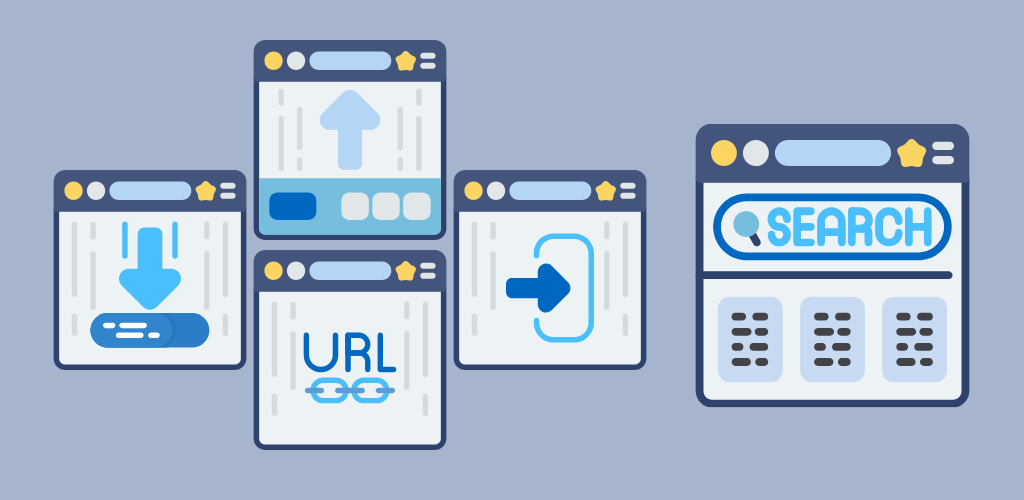
Creating SEO-Friendly URLs
Ever notice how some website addresses look like alphabet soup? Those messy URLs aren’t just ugly – they’re killing your SEO potential.
Clean, readable URLs perform better in search results. Period.
Want proof? URLs with relevant keywords get 45% more clicks than cryptic ones with random numbers and characters.
Here’s what makes a URL SEO-friendly:
- Keep it short (3-5 words max)
- Use hyphens to separate words (not underscores)
- Include your target keyword
- Avoid special characters and numbers
- Make it descriptive of the page content
Bad URL: example.com/p=123?id=456
Good URL: example.com/seo-friendly-urls
Internal Linking Best Practices
Internal links are like secret passageways connecting the rooms of your website mansion. Use them wrong, and visitors get lost. Use them right, and both users and Google will thank you.
The magic happens when you:
- Link from high-authority pages to important content
- Use descriptive anchor text (not “click here”)
- Create a logical path for users to follow
- Prioritize linking to conversion-focused pages
- Maintain a reasonable link density (2-3 links per 100 words)
Pro tip: Run a quarterly internal link audit. Find pages with few inbound links and give them some love from your top-performing content.
Site Architecture That Boosts Rankings
Your website structure isn’t just for show – it’s a ranking factor Google takes seriously.
The ideal site architecture follows the “three-click rule” – users should reach any page within three clicks from the homepage. This creates a flat, efficient structure rather than a deep, complex one.
Picture your site as a pyramid:
- Homepage at the top
- Category pages in the middle
- Individual posts/products at the bottom
This structure helps search engines understand page importance and relationships.
Don’t forget breadcrumb navigation! It’s not just user-friendly – it creates additional internal linking opportunities and helps search engines understand your site hierarchy.
Lastly, create and submit an XML sitemap. Think of it as giving Google a map of your entire website territory.
Image Optimization Techniques

Reducing Image Size Without Losing Quality
Ever noticed how some websites take forever to load? Bloated image files are often the culprit.
The truth is, most website owners upload images straight from their camera or stock photo site without optimization. Big mistake. Each megabyte matters!
Here’s how to slim down those images without making them look terrible:
- Use compression tools like TinyPNG, ShortPixel, or Squoosh
- Save in the right format:
- JPEG: Best for photographs and complex images
- PNG: Ideal for images with transparency
- WebP: Modern format with better compression (but check browser support)
- JPEG: Best for photographs and complex images
Pro tip: Most images can be compressed by 60-70% with virtually no visible quality loss. I’ve seen sites cut load times in half just by properly optimizing images.
If you’re using WordPress, plugins like Smush or EWWW Image Optimizer can handle this automatically.
Alt Text That Improves Rankings and Accessibility
Alt text isn’t just for SEO—it’s how visually impaired users “see” your images through screen readers.
Bad alt text: “image1.jpg” or “product photo”
Good alt text: “woman using laptop to complete on-page SEO checklist”
Keep alt text under 125 characters and include your target keyword when it makes sense naturally. Don’t keyword stuff!
Google uses alt text to understand image context, which affects your rankings. But remember, the primary purpose is accessibility.
Image Naming Conventions for SEO
Filenames matter more than you think. “IMG_29475.jpg” tells search engines nothing about your image.
Instead, use descriptive filenames with keywords separated by hyphens:
- Bad: DCIM0123.jpg
- Good: on-page-seo-checklist-infographic.jpg
This simple step gives search engines additional context about your image content before they even process the alt text.
Mobile Optimization Essentials

Mobile-First Indexing Requirements
Google doesn’t care about your desktop site anymore. Harsh, but true.
They’re crawling the mobile version of your site first because that’s what most people use. If your mobile experience sucks, your rankings will too.
To nail mobile-first indexing:
- Make sure your mobile site has the same content as desktop
- Keep structured data on both versions
- Verify both sites in Search Console
- Check that your robots.txt doesn’t block mobile resources
Mobile isn’t “nice to have” anymore—it’s the whole ballgame.
Improving Page Speed for Mobile Users
Nobody waits for slow sites on mobile. Three seconds and they’re gone.
Here’s what actually moves the needle:
- Compress all images (seriously, ALL of them)
- Enable browser caching
- Minify CSS, JavaScript, and HTML
- Remove render-blocking resources
- Use a CDN to deliver content faster
Test your mobile speed with Google’s PageSpeed Insights. If you’re scoring under 70, you’re leaving traffic on the table.
Touch-Friendly Navigation Elements
Fat fingers need big targets. That’s mobile design 101.
Your perfectly clickable desktop menu becomes a frustration factory on mobile when buttons are too small or crowded.
Make these changes now:
- Keep navigation buttons at least 48×48 pixels
- Add 8px padding between clickable elements
- Place key navigation at the bottom of the screen (where thumbs naturally rest)
- Make your search bar prominent and touch-friendly
Small fixes here dramatically reduce bounce rates.
Responsive Design Best Practices
Responsive design isn’t just making things fit on a smaller screen. It’s about creating a completely functional experience.
Do these right:
- Use viewport meta tags to control page scaling
- Implement flexible images that resize proportionally
- Adopt a fluid grid system (forget fixed pixel widths)
- Test on actual devices, not just browser emulators
Remember those annoying “view desktop site” links? That’s what users click when your responsive design fails. Don’t make them need it.
Technical SEO Checklist

Schema Markup Implementation Guide
Ever wondered why some search results show star ratings, prices, or recipe details right in Google? That’s schema markup working its magic.
Schema tells search engines exactly what your content means, not just what it says. And let me tell you – search engines LOVE this clarity.
Getting started is easier than you think:
- Head to Schema.org to find the right markup type for your content
- Use Google’s Structured Data Markup Helper to generate the code
- Test your implementation with Google’s Rich Results Test
- Add the code to your website’s HTML
Focus on these high-impact schema types:
- Organization/LocalBusiness (crucial for brand searches)
- Product (shows price, availability, ratings)
- FAQ (grabs more SERP real estate)
- HowTo (perfect for tutorial content)
- Article (helps news content stand out)
Pro tip: Don’t go crazy adding every possible schema type. Pick what actually matches your content. Google penalizes fake schema faster than you can say “deindexed.”
Fixing Broken Links and Redirects
Nothing kills user experience like clicking a link and hitting the dreaded 404 page. Your visitors hate it. Search engines hate it even more.
Start by running a full site audit using Screaming Frog or Ahrefs. These tools will uncover:
- Broken internal links
- Broken outbound links
- Redirect chains (a redirect pointing to another redirect)
- Redirect loops (the nightmare scenario)
For broken internal links, you have two options:
- Update them to point to the correct URL
- Set up 301 redirects to send users to relevant pages
For broken outbound links:
- Replace with updated URLs if available
- Remove them entirely if the destination no longer exists
- Find alternative resources to link to
Watch out for redirect chains! Each additional hop:
- Slows down page load time
- Leaks link equity
- Frustrates users
Aim for a maximum of one redirect between the original URL and final destination. Your server will thank you.
Optimizing Core Web Vitals
Core Web Vitals aren’t just another Google buzzword – they’re actual ranking factors that measure real user experience.
The three metrics you need to obsess over:
Largest Contentful Paint (LCP): How quickly does your main content load?
- Target: Under 2.5 seconds
- Fix by: Optimizing server response times, removing render-blocking resources, and compressing images
First Input Delay (FID): How responsive is your page when users try to interact?
- Target: Under 100ms
- Fix by: Breaking up long JavaScript tasks, optimizing JavaScript execution, and reducing third-party code
Cumulative Layout Shift (CLS): Does your page jump around as elements load?
- Target: Under 0.1
- Fix by: Setting image dimensions, reserving space for ads, and avoiding inserting content above existing content
Tools like PageSpeed Insights and the Core Web Vitals report in Google Search Console will show you exactly where you stand.
Remember: mobile performance matters most. Test on actual devices, not just your fancy developer machine.
XML Sitemap Optimization
Your XML sitemap is like handing Google a map of your website’s most important content. Yet most sitemaps are bloated messes that waste crawl budget.
Here’s how to fix yours:
First, audit your current sitemap. Is it including:
- Pages blocked by robots.txt? (Pointless)
- Noindexed pages? (Counterproductive)
- Redirects? (Wasteful)
- Low-value content? (Budget drain)
A truly optimized sitemap only includes:
- Your most important pages
- Content that’s canonical (no duplicates)
- Pages you actually want indexed
For large sites, split your sitemap into logical sections:
- blog-sitemap.xml
- product-sitemap.xml
- category-sitemap.xml
Then create a sitemap index file that links to each section.
Don’t forget to:
- Keep file size under 50MB and 50,000 URLs per sitemap
- Update your sitemap when publishing new content
- Submit it through Google Search Console
- Include the sitemap location in your robots.txt
The cleaner your sitemap, the more efficiently search engines can crawl your most valuable pages.
User Experience Factors That Impact Rankings

A. Reducing Bounce Rate with Engaging Content
Google’s watching how quickly visitors hit the back button on your site. High bounce rates? That’s a red flag telling search engines your content isn’t delivering what users want.
The fix is simple but not easy: create content that grabs attention and keeps it. Start with killer headlines that make specific promises. Then deliver with an opening that hooks readers immediately.
Break up your text with:
- Subheadings that guide skimmers
- Bullet points for scannable info
- Images that reinforce your message
- Short paragraphs (2-3 sentences max)
But the secret sauce? Writing like a human. Nobody wants to read corporate robot-speak. Ask questions. Use “you” and “your.” Tell stories. Include examples that make abstract concepts concrete.
And always end sections with something that makes them want to keep reading. The goal isn’t just to inform—it’s to create an experience that makes leaving feel like a mistake.
B. Improving Dwell Time and Session Duration
Search engines love it when visitors stick around. More time on page signals valuable content—exactly what Google wants to rank highly.
Try these tactics to keep eyes on your content:
Create content depth that answers every possible question a reader might have. When they don’t need to go elsewhere for answers, they stay put.
Embed relevant videos that complement your written content. A 3-minute video instantly boosts session time for engaged viewers.
Internal linking is your secret weapon. Strategically place links to related content that naturally extends the reader’s journey through your site. Don’t just link randomly—make each suggestion feel like the natural next step.
Interactive elements work magic on engagement metrics:
- Calculators
- Quizzes
- Polls
- Comparison tools
Each gives visitors a reason to interact rather than just consume passively.
C. Creating Intuitive Navigation Structures
Nobody likes feeling lost. Confusing navigation frustrates users and sends them running back to search results—a major ranking killer.
Structure your site like you’d explain it to a 10-year-old: simple, logical, and obvious. Your visitors should always know:
- Where they are
- Where they can go
- How to get back
The three-click rule still matters. Users should reach any important page within three clicks from anywhere on your site.
Breadcrumb navigation shows the exact path from homepage to current location, giving users context and easy backtracking options.
Mobile navigation deserves special attention. Hamburger menus are standard, but make sure dropdowns are touch-friendly and don’t require precision clicking.
Remember to use descriptive menu labels. “Services” is vague. “Marketing Solutions” tells users exactly what they’ll find.
D. Page Load Speed Optimization Techniques
Slow sites are dead sites. Each second of load time increases bounce rates by 32%. Brutal, right?
Start with image optimization—the fastest win for most sites:
- Compress all images without quality loss
- Use next-gen formats like WebP
- Implement lazy loading so images load only as users scroll
Minimize HTTP requests by combining CSS/JS files. Each external resource needs its own request, slowing everything down.
Browser caching tells visitors’ browsers to store site elements locally. When they return or visit another page, those elements load instantly from their device, not your server.
For truly impressive speeds, consider:
- Content Delivery Networks (CDNs) that serve content from servers closest to each user
- Reducing server response time through better hosting
- Eliminating render-blocking JavaScript that prevents pages from loading visually before scripts complete
Test your speed regularly with Google PageSpeed Insights and make tweaks based on their specific recommendations for your site.
FAQ’s
How to do proper on page SEO?
Doing proper on-page SEO isn’t rocket science, but it does require attention to detail. Start with keyword research to understand what your audience is searching for. Then make sure those keywords appear naturally in your title tags, meta descriptions, headers, and throughout your content.
But here’s the thing most people miss: it’s not just about stuffing keywords everywhere. Google’s gotten smart. They want content that actually helps people.
Focus on creating comprehensive, well-structured content that answers questions your audience has. Use descriptive URLs that include your target keyword. Optimize your images with alt text and compress them for faster loading.
Internal linking is huge too. Connect related pages on your site to help both users and search engines understand your content better.
And don’t forget the technical stuff. Your site needs to load fast (under 3 seconds), work perfectly on mobile devices, and have a secure HTTPS connection.
The bottom line? Good on-page SEO means creating content for humans first, then making it easy for search engines to understand what you’re offering.
What does on-page SEO consist of?
On-page SEO consists of everything you can control directly on your website. Think of it as the foundation of your SEO house.
The key elements include:
- Content quality – Well-researched, original content that serves a purpose
- HTML elements – Title tags, meta descriptions, header tags (H1, H2, etc.)
- Keyword optimization – Strategic placement in important locations
- URL structure – Clean, readable URLs with keywords when possible
- Image optimization – Proper alt text, compression, and descriptive file names
- Internal linking – Strategic connections between related pages
- Page speed – Fast-loading pages that don’t frustrate visitors
- Mobile-friendliness – Content that looks and works great on all devices
- User experience – Easy navigation, readable text, and clear calls to action
- Schema markup – Structured data that helps search engines understand your content
What makes on-page SEO so powerful is that you have complete control over these elements. Unlike off-page factors like backlinks, you can implement these optimizations today and start seeing results relatively quickly.
What are the 4 types of SEO?
The SEO world typically breaks down into four main categories, each playing a crucial role in your overall strategy:
- On-page SEO – Everything you control directly on your website pages. This includes content quality, keyword usage, meta tags, headers, and internal linking. It’s about making your content both user-friendly and search engine-friendly.
- Off-page SEO – All optimization happening outside your website. Backlinks are the big one here, but social signals, brand mentions, and local citations matter too. Think of this as building your site’s reputation and authority.
- Technical SEO – The behind-the-scenes stuff that makes your site work properly. This covers site speed, mobile optimization, indexing, crawlability, site architecture, structured data, and security. If your site has technical issues, even amazing content won’t rank well.
- Local SEO – Optimization specifically for location-based searches. This includes Google Business Profile optimization, local keywords, NAP (Name, Address, Phone) consistency, and location-specific content. Critical if you serve customers in specific geographic areas.
The most effective SEO strategies use all four types together. They complement each other – neglect one area and your entire SEO effort suffers.
How to do on page SEO in 2025?
On-page SEO in 2025 is all about balancing advanced technology with genuine human connection. Here’s what’s working:
AI-driven content optimization is standard now, but the winners are using it smartly – to enhance human creativity, not replace it. Use AI tools to analyze competitor content gaps and user intent patterns, then create something uniquely valuable.
Voice search optimization is crucial. People talk differently than they type, so incorporate conversational phrases and questions. With smart speakers everywhere, this traffic source keeps growing.
E-E-A-T signals matter more than ever. Content must demonstrate experience, expertise, authoritativeness, and trustworthiness. Include author credentials, cite reliable sources, and showcase real expertise in your niche.
Page speed requirements have gotten stricter. If your site doesn’t load in under 2 seconds, you’re losing both visitors and rankings. Implement server-side rendering and optimize Core Web Vitals meticulously.
Visual content optimization has evolved beyond alt text. Detailed image markup, video transcripts, and accessibility features are now ranking factors. Every visual element needs proper context for both users and algorithms.
The most successful sites are those creating “content ecosystems” – interconnected pieces that comprehensively cover topics from multiple angles, with clear site architecture showing the relationships between concepts.
Conclusion
Implementing this on-page SEO checklist will significantly boost your website’s visibility in search engines and drive more targeted traffic to your content. From optimizing title tags and meta descriptions to ensuring mobile responsiveness and technical SEO elements, each component works together to create a website that both search engines and users love.
Remember that SEO is an ongoing process that requires consistent monitoring and adjustment. Start by implementing these strategies one by one, track your results, and continue to refine your approach. Your improved rankings won’t happen overnight, but with patience and persistence, you’ll see meaningful growth in organic traffic and better positioning for your most valuable keywords.

